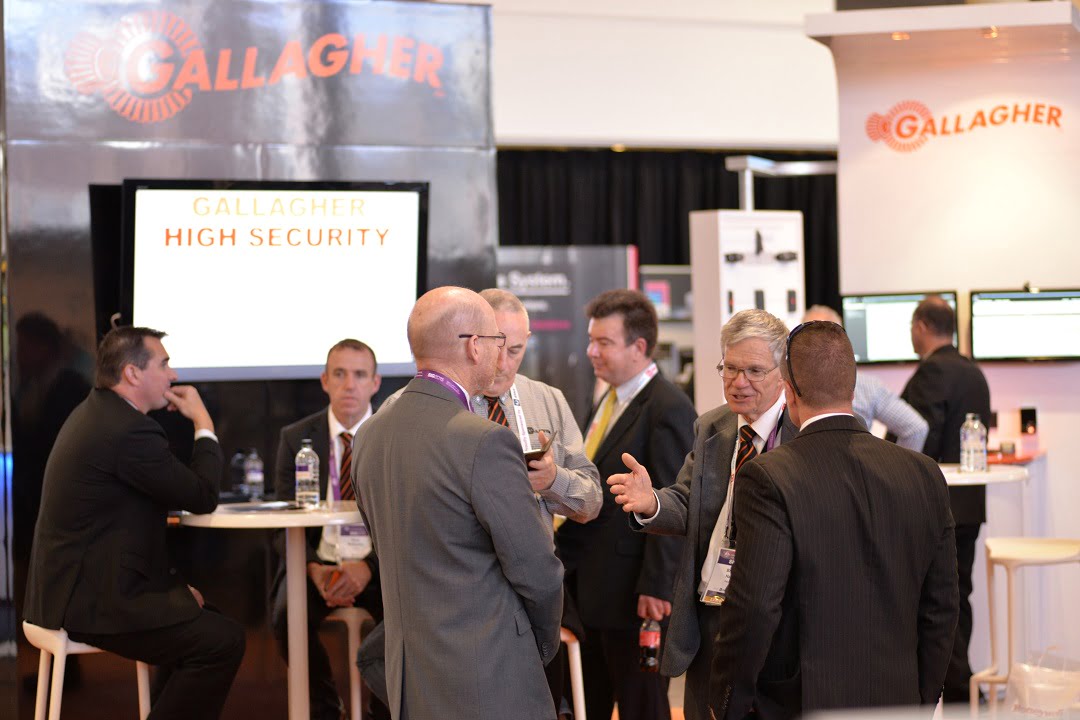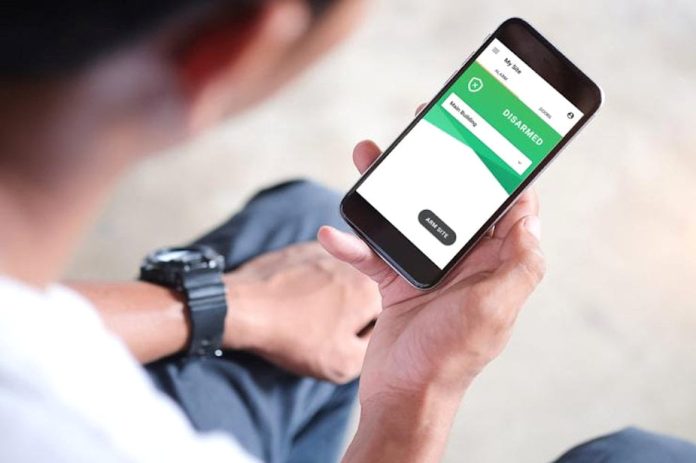Visitor management solutions have always acted as a filter and management tool, especially for organisations with lightweight reception teams. The latest solutions, integrated into advanced access control systems, take visitor management to a completely new level.
When you’re thinking about visitor management solutions, there’s plenty to consider – touchless check-in with QR, face mask detection, GDPR compliance, host notification, badge printing, event management, pre-registration, affordability, cloud-based services, scalability, contractor management and plenty more. Vital, too, is the way visitor management solutions work with access control solutions to implement procedures.
According to Jason Allan, product marketing manager at Nirovision, the COVID-19 pandemic has led to a trend towards touchless access control to prevent the spread of germs in the workplace.
“The best way to achieve this is linking with a visitor management system where self-sign-in and facial recognition allow for touchless entry,” Allan says. “Most access control systems rely on a pin code or password to verify access, but visitor management systems add a layer of security by collecting more details about the individual. This additional data enables a workplace to set up unauthorised visitor alerts, manage access credentials remotely if needed, capture detailed logs of visitors, easily check-in visitors, and enhance access control with 2FA and more.
“Facial recognition is the most important core feature of visitor management systems as this makes the worker and visitor sign-in process more efficient and accurate, not to mention touchless, which is more important than ever.”

Has the COVID-19 pandemic increased the importance of visitor management systems and which functionalities – say, mask detection – offer the most seamless management of visitor and staff safety, in Allan’s opinion?
“Knowing who is entering the workplace at any given time and being able to easily pull reports of logged visits is critical to contact tracing, which has proven effective in the fight against COVID-19,” Allan explains. “Some visitor management solutions have also provided a way for workers and visitors to check-in without touching anything, which greatly helps limit the spread of germs.
“Facial recognition plays an important role in providing touchless visitor management. While static QR codes are contactless, without facial recognition it’s easier for individuals to evade check-in and/or log incorrect details. Any visitor management system is only as good as the data it captures, and facial recognition can greatly help with this.”
According to Allan, simplicity of operation is key.
“Users of visitor management solutions can span many roles from HR managers, receptionists, health and safety officers, and security personnel, so ease of use across different devices and platforms is really important,” he says. “This also means there is a need for different access levels for different roles. For example, a security guard may only need access to visitor alerts, while the HR manager may need full admin access.”
Gallagher’s national technical manager, Mike Margrain, agrees visitor management solutions are vital.
“Visitors are often the greatest risk on a site, given they don’t tend to have much knowledge of the risks or the emergency procedures to follow in the event of an emergency,” Margrain explains. “On some sites, this can cause productivity issues, or worse — injury and even death.
“Visitor management solutions can help reduce this risk and ensure safe practices can be followed in emergencies — while demonstrating duty of care and making visitors feel safe. This is most commonly achieved through conditions of entry and induction requirements, escort requirements for access, and automatic system notifications.”
Can a visitor management system work independently of an access control solution, in Margrain’s opinion, or are they more effective when integrated?
“Visitor Management solutions can be independent of an access control system, however, there are many benefits to having them tightly integrated,” argues Margrain. “Systems can be interfaced to share this information when not part of a core access control system, however, this does introduce reliance on additional products and requires robust interfacing to ensure the data is accurate and always available when needed.
“Gallagher’s offering is an intrinsic part of the Command Centre platform, which means seamless pre-registration; shared IDs and credentials; centralised reporting alongside employees and contractors; and association of escorts in evacuation reporting and dashboards. Guards can view alarms, such as when visitors are late to depart, in the same way they manage other site alarms. Furthermore, in many cases visitors may later end up as contractors and even staff members—meaning they can exist as a single entity for reporting purposes over time.”
What are the most important functions/features of visitor management systems in Margrain’s opinion?
“Being able to associate visitors with hosts (be those employees or contractors) with broadcast messaging, can provide business continuity and even save lives during serious emergencies,” he explains. “The ability to quickly identify where people are, who is responsible for them, and advise them what to do— can be lifesaving.
“This should be possible within single dashboards/reports/mobile devices – with employees, contractors, and visitors displayed on a single screen. To ensure people can be located easily this information should identify the visitor’s host/escort and provide contact information of those persons.
“In the event of an emergency, it should be possible for centralised notifications to be broadcast to those on site via email/SMS/mobile push—where different messages might be sent to different people based on what kind of user they are in the system. For instance, a visitor might require different instructions to an employee, and safety personnel (such as fire wardens or those with first aid training), may receive specific instructions.”
Has the COVID-19 pandemic increased the importanance of visitor management systems and which functionalities – say, mask detection – offer the most seamless management of visitor and staff safety, in Margrain’s opinion?
“The COVID-19 pandemic has certainly increased interest in personnel safety—be that for employees, contractors, or visitors,” he says. “Gallagher has seen heightened interest in visitor management to provide centralised reporting for proximity and contact tracing, as well as temperature & face mask detection on entry. In some cases, temperature detection policies have utilised random selection or using rules to enforce selection at least once every ‘n’ days — streamlining site entry for those recently tested.
“We have also seen the pandemic increase market interest in touchless access control mechanisms — be that through facial/hand wave biometrics, or via the use of mobile credentials where a user only needs to interact with their own mobile device. QR Codes are still fairly common, however, lack security and do still require consumables, so there is a growing market trend toward mobile credentials. Gallagher’s Mobile Connect solution also provides other benefits, such as push notification support with emergency broadcast messaging and digital IDs on the user’s smartphone.”

What about securing visitor management systems – the best solutions have pre-registration and host notification, evacuation management, demanding multi-network connectivity – how important is cyber security?
“Cybersecurity is of utmost importance in the world today, including data privacy with PII (Personally Identifiable Information)— especially with legislation such as GDPR,” Margrain says. “If site managers wish to ensure data is stored and exchanged securely, they should challenge vendors on their approach to cybersecurity across the entire platform.
“The use of best practice and open standards with authentication and encryption should be well documented and the vendor should have a responsible disclosure policy and publish CVEs in the event of any security vulnerabilities. This information should be readily available to any end-user looking to assess their options. These risks are typically reduced if there is a single platform, as there are less endpoints to rely on. Maintaining a system with major updates and security patches, should also form part of any security system and IT maintenance.
How important is simplicity of operation, in Margrain’s opinion, given the depth of many visitor management solutions from the point of view of pre-registration, registration, notification, event reporting, badge creation and printing, etc?
“Users love simplicity,” he explains. “At Gallagher, we strive for ‘brilliant simplicity’ as a design ethos. That is, making highly secure and flexible systems available in simple and intuitive ways to the end-users operating them. If the pre-registration and on-site sign-in and sign-out experience is simple, people are going to think more positively about that organisation and be more inclined to return or promote it to others. The process should be easy and fast, without sacrificing the outcomes that the system is there for. When a solution is built well, the complexity and advanced functionality behind it becomes transparent to the users in front of it.”
“Gallagher’s visitor management solution is an optional feature that becomes part of a Command Centre security management system. The entire platform can be hosted on-premise or within cloud infrastructure to suit the customer’s needs. Virtualisation is therefore supported in both environments, without reliance on any specific hypervisor technology. Gallagher can provide advice and support to customers alongside Gallagher channel partners to tailor a deployment that best suits the client.”
Some visitor management solutions incorporate app management and from the point of view of security teams it can be hard to decide what sort of functionalities they should be looking for and what sort of cutting-edge features offer high value.
“Gallagher Visitor Management bakes in emergency management functionality for quick handling when most needed,” Margrain says. “This includes visitor and escort association, evacuation reporting (ad-hoc and event based), and live dashboards for on-site movements. For the collected location data to be useful in emergency scenarios, it is important to ensure it is accessible by those who need it.
“With Gallagher, this live location data is also accessible by privileged mobile users for use during evacuation. These users can utilise mobile devices at muster points to quickly tag building users into safe locations — by reading cards, other mobiles, or via manual swipe. This process allows safety personnel to quickly identify who remains in unsafe areas — displaying thumbnail photos and contact details for easy location.”
There are a number of things Margrain says integrators should be paying attention to when installing and integrating visitor management solutions.
“As with all solution design, this should start with a clear understanding of customer requirements,” he says. “For instance, what risks or problems is the customer looking to solve? What differences might there be for different locations or types of users (visitors vs travelling employees vs contractors)?”
According to Hills’ Sarah Armitage, the HillsTrak visitor management system uses a variety of technologies, including computer vision, to validate and authenticate an individual’s identity as it relates to access control.
“Visitor management and access control systems can work independently, but there are several benefits realised by integrating the 2,” says Armitage. “For instance, the HillsTrak system is designed to complement legacy access control systems. Using our facial recognition technology, HillsTrak can provide instruction to an access control system in relation to an individual’s security credentials, or simply validate that the individual is who they say they are.
“Dependence on access control hardware only can be a security concern, as traditional and legacy access control systems, such as swipe pass or pin number, are not infallible. The HillsTrak solution provides increased security using facial recognition to enhance an existing solution, without the need to replace the access control system.”
What are the most important functions/features of visitor management systems in Armitage’s opinion?
“The visitor management system is often the first experience a visitor has with a business,” she explains. “User experience, ease-of-use and automation are key. In the event of an emergency, ease of data access is very important, working in conjunction with pre-defined workflows and procedures.”
According to Armitage, the requirements of a visitor management system expanded during the COVID-19 pandemic.
“Organisations are now often required by law to keep accurate records of visitor movement on site,” she explains. “Hills has also seen demand for this type of solution for organisations who have traditionally not required visitor registration. Savvy businesses are not only automating but looking for efficiencies and ways to enhance safety of their staff and visitors.
“HillsTrak provides an opportunity to screen for masks and PPE, interfacing to the access control system as part of workflow management. Understanding business needs versus budget has been key to our approach. We have a range of hardware solutions suited to the needs of all types of businesses and organisations. With low-cost, highly effective Android-based screening tools available, smaller businesses can provide this safety and peace of mind to their staff and clients.”
Armitage says facial recognition and QR technologies can have a part to play for visitor management in the COVID-19 environment.
“QR is widely available and is known to be very cost-effective for any type of business,” she explains. “Facial recognition has traditionally been a solution that is considered to be out of reach for some business types, due to hardware requirements and costs. Our HillsTrak facial recognition can be run be off any Android device with photographic capabilities, making it a viable option for cost-sensitive businesses. HillsTrak can provide a range of specialised camera solutions, including thermal technology, to suit more demanding environments.”
Armitage agrees with the others when it comes to cyber security.
“Data security is paramount, with a host of associated laws and regulations,” Armitage says. “Data theft is of increasing concern with visitor data collected by many businesses. Theft of personal data may have a financial implication for a business, but the reputational damage associated with mismanagement of securing personal data can break a business. All HillsTrak data is encrypted and stored securely on Amazon Web Services Australia, providing peace of mind to our clients and their customers alike.”

Simplicity of operation is vital, too.
“The visitor management system is often the first experience a visitor has with a business,” she explains. “Ease of use is central to this user experience. To ensure accuracy of data captured, the visitor management system must be intuitive and straightforward for the user. The HillsTrak solution is designed to work seamlessly in high traffic facilities during peak times, eliminating the need for queuing and high levels of staff and administrative overhead. QR codes are a well-utilised example of how to streamline the registration process via mobile phone.”
When it comes to integration, Armitage points out that visitor management systems must be backward compatible with legacy systems on site.
“Although these systems are often procured independently, the integration tools are extremely important to ensure businesses don’t need to replace existing systems to enhance functionality on site,” she explains. “HillsTrak facial recognition provides a range of APIs and interfaces to allow integration with a site’s existing third-party access control system.
“HillsTrak is able to interface with active directory and other databases to validate data real time and, because HillsTrak is delivered as a SaaS platform, there are significant commercial and support benefits. This approach is highly secure and is our recommended approach. HillsTrak deployment is also available on premises where absolutely required.”
Another strong feature of the system are its app functionalities.
“The HillsTrak app will provide real time location of staff, which can be used as or cross-referenced with visitor management data,” Armitage says. “Deployed as a standalone solution, using GPS on mobile phones, or integrated with Bluetooth beacons, workflows can be configured for time sheets, evacuation management and other specific use cases relating to location.”
When it comes to integrators, what is most important to them with it comes to deploying visitor management systems, according to Armitage?
“One of the keys to a successful project is keeping integration costs to a minimum,” she explains. “HillsTrak provides multiple interface options, as well as providing a number of tools to assist in the appropriate formatting of data. The HillsTrak platform is easy to use, and in the event that technical support is required, the HillsTrak development and support team is based in Australia.”
#sen.news












